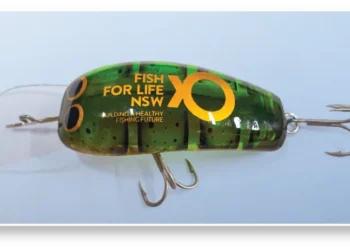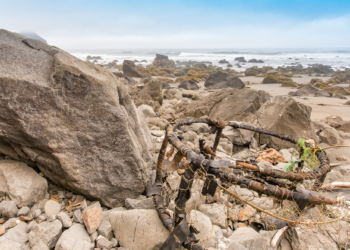
SEA urchin booms and the damage they cause are in the news again. It’s not entirely new, as at least a decade ago abalone fishers were getting very worried about sea urchins taking over and virtually destroying reefs that previously supported healthy populations of abs. At the time, NSW Fisheries encouraged the harvesting of the spikey pests and publicised positive stories from high profile chefs about what a fantastic product sea urchin roe is. Roe did and still features on many upmarket restaurant menus.
Urchins are of vague interest to anglers as they make great burley for blue groper but also cause some nasty incidents when feeling under rock ledges for red bait crabs. An urchin spine under a fingernail is something not easily forgotten.
There have been a couple of recent stories about commercial urchin harvesters who want access to marine national park restricted zones to help control numbers, and presumably make a buck or two in the process. Tricky question, a bit like commercial operators who wanted limited trap fishing allowed in some of NSW’s recreational fishing havens. Might just be a bit too much of the thin edge of the wedge for those who support commercial free areas.
The interesting question is, though, why the current boom in urchin numbers, right down the east coast as far as Tasmania. Well, partially, because of climate change and its effects on current flows and sea temperatures, which allowed the little buggers to greatly expand their range, turning healthy, weedy reefs into barren rock shelves in the process. They’ll eat just about anything growing on a reef and move quite quickly, leaving denuded habitat for the original inhabitants.
But the second reason is of equal interest to those of us interested in marine population dynamics and sustainable fishing practices. The main predators of the sea urchins in question are large eastern rock lobsters…you know, those “sustainably managed” saltwater crayfish which are way out of my price range at $80 or so a kilo. There just aren’t all that many left along the east coast to prey on the urchins, although in a few areas of Tasmania where there are still reasonable numbers of big crays the urchins haven’t taken over. So, there might be just a bit more to setting catch limits for lobsters other than retaining sufficient numbers to enable some breeding, if that doesn’t result in enough crays to keep on top of the urchins.
Twenty per cent of a biomass of fish or crustaceans might be enough to keep an individual species viable, but maybe not enough to keep a balance on numbers of species that that species interacts with. The other current example is the reported massive increase in squid, octopus and cuttlefish populations, not just in Australia. Again, climate change is suggested as one cause, but it’s also speculated by research scientists that a lot of their natural predators have been dramatically reduced in numbers through fishing, “sustainable” or otherwise.
It might be time for fisheries managers to take a real hard look at the methodologies and formulae they use to determine species “sustainability”, and what should constitute a trigger for a temporary or permanent fishery closure.
















